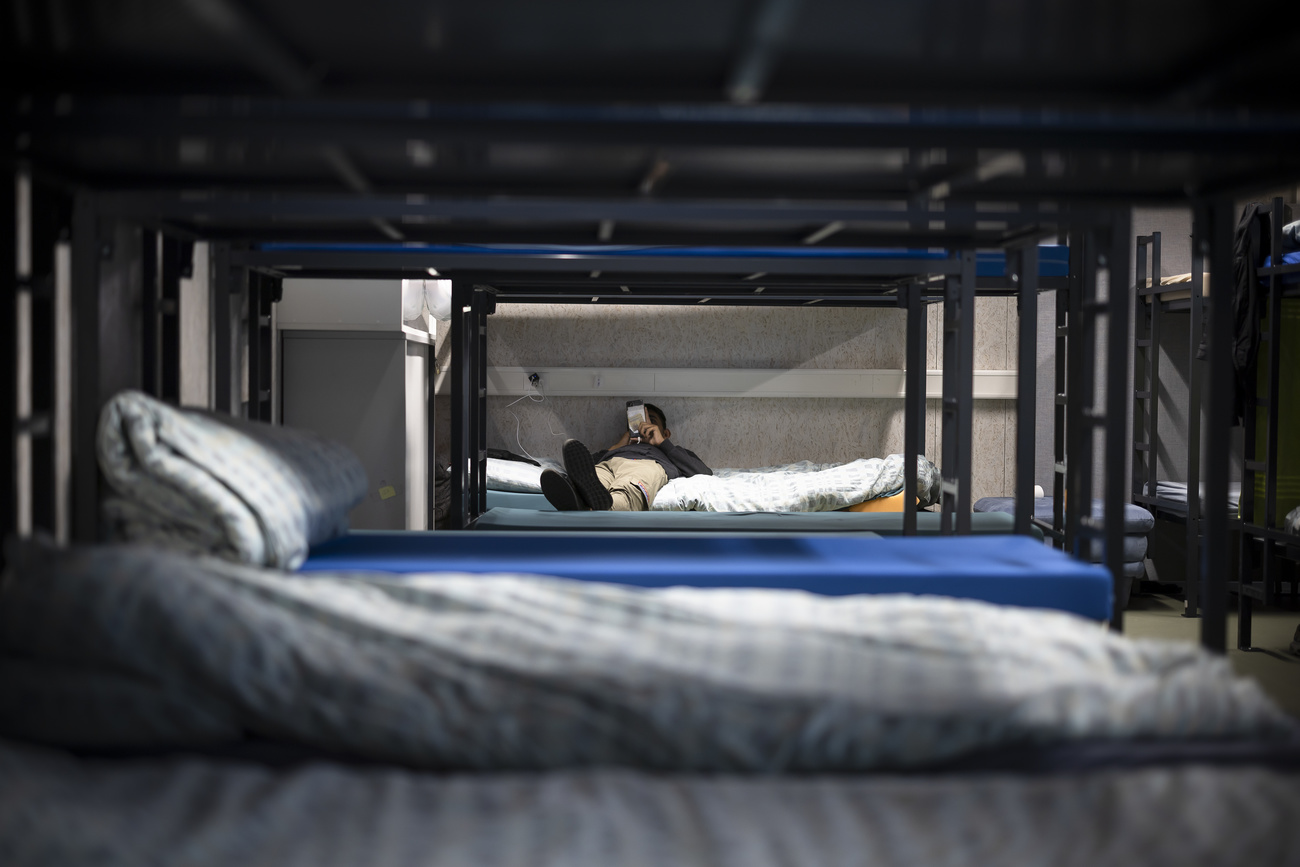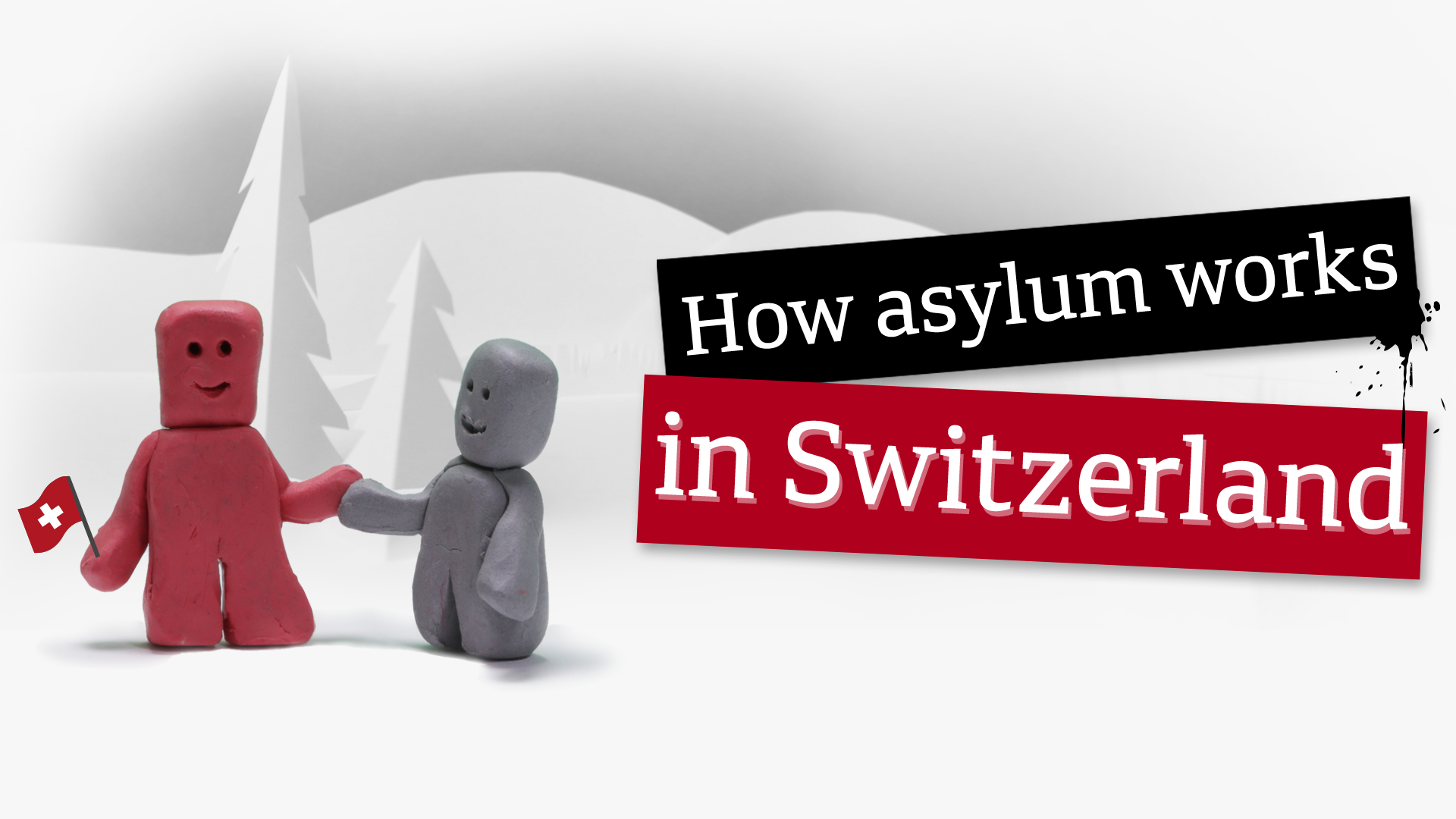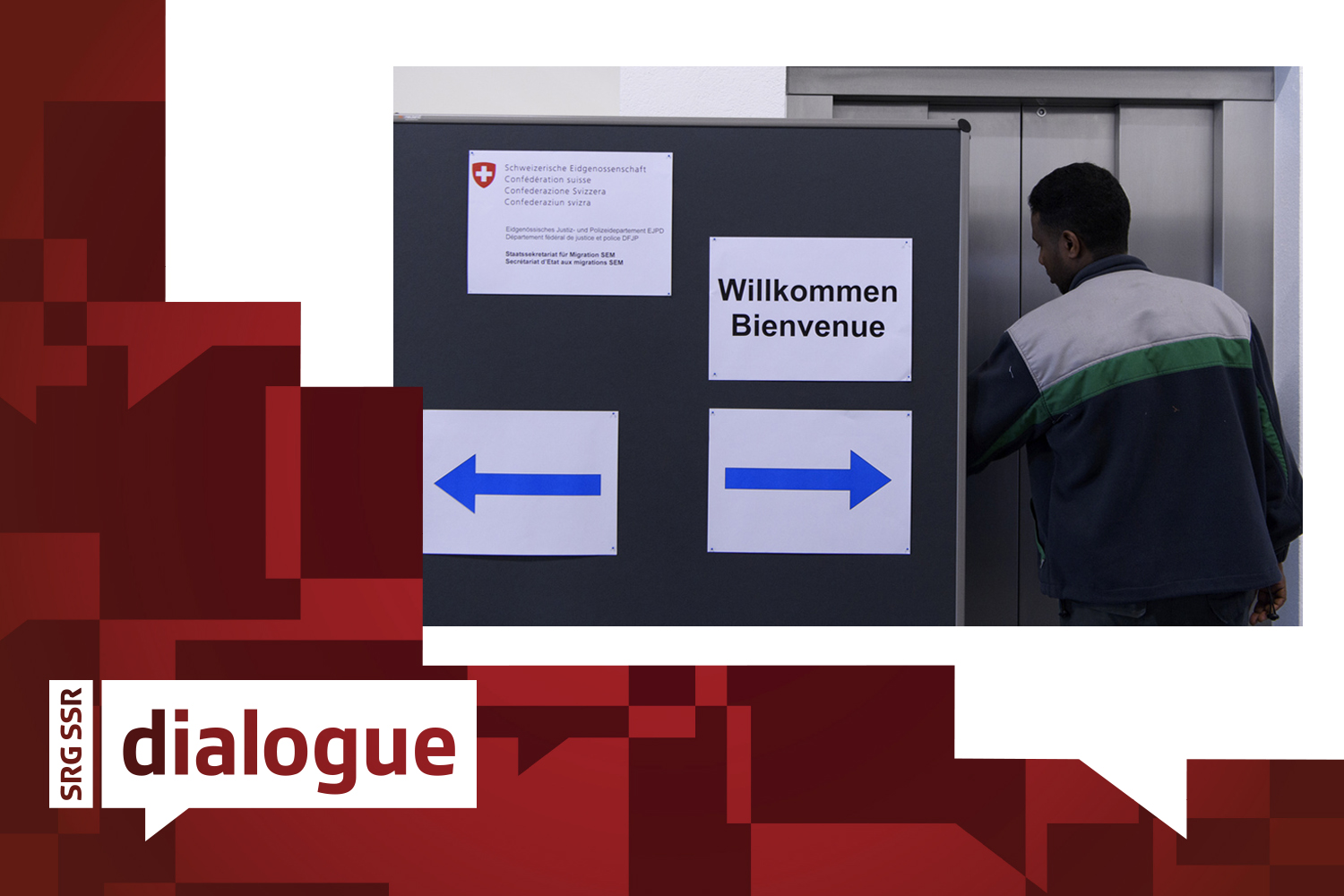Why Switzerland is piloting a 24-hour asylum procedure for North Africans

A fast-track decision-making procedure is being tested in Zurich for asylum-seekers from Morocco, Algeria, Tunisia and Libya. What’s behind its introduction?
On Wednesday the Tages-Anzeiger newspaper revealedExternal link that a pilot project was launched on November 13 in Zurich to fast-track decision-making on certain asylum claims. More specifically, applications made by nationals from Morocco, Algeria, Tunisia and Libya will be dealt with in 24 hours. The Zurich pilot is expected to run until the end of February 2024.
False claims
Over 20% of asylum-seekers come from these North African countries, but only around 2% of these are recognised as refugees in Switzerland. According to the State Secretariat for Migration (SEM), one reason for the low acceptance rate is that people from other North African countries falsely list Libya as their country of origin to improve their chance of being accepted. Around 10% of asylum claims made by Libyans in Switzerland result in refugee status.
The aim of the accelerated procedure is to send a negative signal to people who usually have no prospect of gaining asylum in Switzerland, the SEM told Swiss public broadcaster, SRF.
The Swiss Refugee Council warns that it seems unrealistic to properly clarify the facts of the asylum applications within such a short period.
“It is also questionable whether asylum-seekers can talk about all relevant issues within 24 hours, such as experiences of violence or exploitation, which could make them vulnerable. The risk of incorrect decisions would in turn lead to more complaints and ultimately the process could take longer,” spokesperson Lionel Walter told SWI swissinfo.ch via email.

More
How the Swiss asylum system works
Despite the fast-track procedure, many of those affected will probably not be expelled after 24 hours, according to the SEM. Identification of migrants takes time and appeals remain possible.
Previous success
Switzerland already introduced an accelerated asylum procedure in 2019 after almost 67% of the electorate voted in favour of a revised asylum act in 2016. The new asylum procedure limits the maximum length of stay in a federal asylum centre to 140 days. Those whose claims cannot be processed within this deadline are transferred to a cantonal asylum centre.
“The accelerated procedure already offers the possibility of a quick decision,” says Walter of the Swiss Refugee Council.
One reason for speeding up an already accelerated process for specific nationalities is the success of previous attempts in putting a brake on asylum applications. A 48-hour fast-track procedure introduced in 2012 for asylum-seekers from Serbia, Macedonia and Bosnia-Herzegovina, and in 2013 for those from Kosovo and Georgia, has a good record.
“Since measures implemented by Switzerland following the high number of applications for international protection of Western Balkan applicants received in the third quarter of 2012, the level of such applications registered has been particularly low. This may indicate that the set of measures implemented remains particularly effective and has sent a strong message to potential applicants from the Western Balkan countries,” states a 2015 report by the European Asylum Support Office (EASO).
Lack of options
Ten months after her election to the governing Federal Council, Swiss Justice Minister Elisabeth Baume-Schneider is under pressure to react to the rise in asylum applications.
Switzerland recorded more than 12,000 asylum claims in the first half of the year alone – a 43% increase and the highest in a decade, apart from 2016 – for the first half of the year. The SEM expects a total of around 27,000 asylum applications by the end of the year. The figure was around 24,500 in 2022, which itself was 64% more than in 2021, and does not include some 75,000 Ukrainian refugees.
In March representatives from Switzerland’s cantons met the SEM to discuss their inability to accommodate more asylum-seekers. Cantons Bern and Geneva had already been granted a temporary freeze on taking in more people, with two more cantons requesting a freeze. This means that more asylum-seekers would have to be housed in federal asylum centres instead of being allocated to those cantons.

More
Is housing asylum seekers in underground shelters inhumane?
To ease pressure on federal asylum facilities, Baume-Schneider requested CHF132.9 million ($148 million) from parliament to build new accommodation, including makeshift housing fashioned out of shipping containers for 3,000 asylum-seekers. The financial credit request, including another one for half the amount, was rejected by the Senate, which recommended using existing civil protection facilities, including underground bunkers, to house asylum-seekers instead. In light of the Senate’s decision, the government was obliged to extend its ordinance on the emergency use of underground shelters by two years (from the end of 2023 to the end of 2025).
With limited options at its disposal to house asylum-seekers and the refusal of lawmakers to allocate additional funds, the government is looking to buy itself some breathing room.
“If all of a sudden the cantons receive a few hundred more people than they are required to accommodate, it puts the whole system in difficulty, if not in crisis,” Baume-Schneider told Swiss public television, RTS, External linkon Thursday.
The SEM will analyse the impact of the 24-hour asylum procedure after the test phase before deciding on the next course of action.
Edited by Virginie Mangin

More
What is your opinion of Switzerland’s asylum system?

In compliance with the JTI standards
More: SWI swissinfo.ch certified by the Journalism Trust Initiative











You can find an overview of ongoing debates with our journalists here . Please join us!
If you want to start a conversation about a topic raised in this article or want to report factual errors, email us at english@swissinfo.ch.